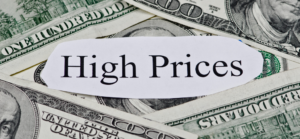Although it feels like this question comes up often, Amos asked it in a new way. Let’s tackle it. Here’s Amos:
Question: “Hi Mark. Thanks for your valuable insights regarding pricing I’ve thoroughly enjoyed them. I do have a question for you that has been boggling my mind. I understand that Fixed Cost shouldn’t be priced in. Yet if we don’t price it in (i.e a mark up), we will never pay for our fixed cost.
How would you solve this seeming paradox? I’d like to throw you an example in insurance pricing which is slightly different as the fixed cost is already incurred before the pricing process. Let’s say, I have a product, which costs $90 in variable cost, but $100 if included fixed cost.
Assuming we just like to break even, we would like to renew the policy at $100. However, if the customer only offers $95, it’s in our best interest to agree as we already ‘allocated’ the fixed cost of $10. If we don’t renew, we will lose $10 but if we renew, we only lost $5. However, if we follow that logic and allow all of our customers to renew at $95, we will not make up for our fixed cost, which leads to a conundrum. What would you do? Would you allow all customers to renew at any price above $90 (variable cost)? Or would you stick to a minimum $100? Cheers Amos
Answer: Let’s start by answering the last question, “What would I do?”
- First, I would NOT charge $100. The implication in the question is the buyers wouldn’t pay $100. Charging $100 would result in zero sales which would not cover my fixed costs.
- Second, I would charge $95 if I’ve already incurred the fixed costs. Those fixed costs are also sunk costs at this point so they are irrelevant to any business decision we would make. Let’s take the $95.
- Third, if I haven’t yet incurred the fixed costs, I would not be in this business. Save the money.
Buyers analysis
Now, let’s assume the buyers aren’t all the same. Some would pay $95 and some would pay $100. Let’s also assume there is no way for us to charge different customers different prices. So we would either charge $95 or $100. In this case, make your best estimate of how many units you would sell at each price. Since variable costs are $90, then $5 times the units you sell at $95 is the contribution margin you expect to get at that price. The contribution for the $100 price is $10 time the number of units you expect to sell. Which price makes you more money? Choose that one. Notice though that fixed costs were not used in that decision at all.
Finally, how do you know a $100 price covers the fixed costs? You estimate that by taking the $10 contribution per buyer and multiplying times the number of buyers. But doesn’t the number of buyers change based on the price you charge? If very few buyers are willing to buy at that price you won’t cover your fixed costs.
Fixing the price
Fixed costs never ever matter to set a price. They absolutely matter in deciding if you want to be in that business. Once you’re in the business, you maximize the total contribution and hope it covers your fixed costs.
Hope that clears it up at least a little. You are not alone. This is a very hard concept for people to grasp because they’ve been doing it wrong their entire business life.














